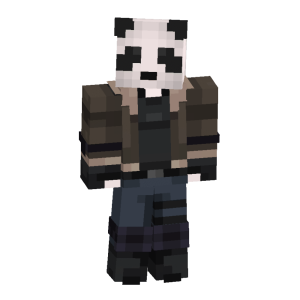Cuban Empire
| |||||||||||||||||||||||||||||||||||||||||||||||||||||||||||||||||||||||||||||||||||
Empire of Cuba
The Empire of Cuba was a major island nation during Version 6 of EarthPol, founded and led by MrTytanic. It rose from democratic ideals into a centralized empire, ultimately becoming one of the largest and most economically influential powers in the Western Hemisphere.
History
Founding and Democratic Era
Cuba was initially established as a progressive democratic republic, centered around its capital city of Havana. Its first government featured a bicameral parliament made up of ten members—five in the House, five in the Senate—with MrTytanic serving as the tiebreaking vote in a semi-presidential system. The Parliament focused on post-SPQM regional recovery, cautious diplomacy, and ensuring that all citizens’ voices were heard equally. However, following the collapse of the powerful SPQM, MrTytanic saw an opportunity to claim abandoned territories across the Americas. Frustrated with Parliament’s reluctance to pursue expansion, he dissolved the legislative body and, in a private, invite-only coronation, declared himself Emperor of Cuba. Despite the dramatic shift, the transition was largely accepted by the population, who were soon won over by the nation’s economic growth, territorial gains, and rising international influence.
Expansion and Economic Boom
Under Emperor MrTytanic’s rule, Cuba expanded rapidly, annexing numerous former SPQM territories, including regions of Mexico and the southern United States. Some towns were inherited, while others were newly founded by settlers from Havana. Drawing inspiration from Roman imperial systems, Cuba implemented a logistical model in which resources were funneled from the provinces back to the capital, creating a centralized economy that supported continued expansion. The empire’s borders were pushed outward to establish distance-based dominance, securing its influence across the map. At its height, Cuba was the largest nation by both population and land area in Version 6. Its automated cactus farm and the Cuban Corner shop in Havana became economic pillars, fueling prosperity and further growth.
Geopolitics and Military Affairs
Cuba allied with **Cascadia**, and briefly joined Vespa in opposition to **Homestead**, participating in **siege warfare** and **Cold War tensions**. It remained diplomatically active, balancing alliances while expanding colonial influence.
Decline and End of V6
As server activity waned, Cuba was **the last nation to go bankrupt**, signaling the effective end of V6. Despite this, its legacy as one of the most resilient and ambitious nations of the version endured.
Government & Law
Cuba’s political structure evolved from a bicameral democratic republic into a centralized imperial system under MrTytanic, who ruled as Emperor with the support of a close group of trusted advisors. While executive power was concentrated in the hands of the Emperor, Cuba maintained a functioning legal system to uphold order and legitimacy within the empire.
The judiciary was spearheaded by Chief Justice PandaJP, who not only wrote and implemented Cuba’s formal legal code but also brought charisma to the court through his satirical in-game TV show, Judge Panda. The judiciary became both a legal institution and a source of entertainment for the community. The most infamous trial under his tenure was The State of Cuba v. NimbKied, a landmark case that captivated the server and became a widely followed public spectacle.
MrTytanic’s reign was also guided by a council of advisors, who helped shape imperial decisions, manage diplomacy, and oversee domestic affairs. While ultimate authority rested with the Emperor, this informal cabinet played a key role in maintaining the stability and direction of the Cuban Empire.
Economy
Cuba's economy in V6 was among the most advanced and well-organized on the server, blending capitalist elements with centralized control. Its economic backbone was an automated cactus farm, developed by TheUnusualMiner—the largest of its kind in V6—which provided a steady stream of income used to fund wars and advance Cuba’s foreign policy goals. In the heart of Havana stood a sprawling public mall, home to various small businesses, with the most iconic being The Cuban Corner—MrTytanic’s national shop that offered everything from building materials and player-crafted goods to banners, map art, and books. This local economic activity was reinforced by a colonial tribute system, modeled after Roman-style resource extraction, in which provinces funneled goods back to the capital, ensuring Havana remained the vibrant center of the Cuban Empire.
Military
Cuba’s military was modest but strategically deployed, participating in:
- **Defensive operations** in former SPQM areas.
- **Colonial control** and protection.
- **Sieges against Homestead** during alliance conflicts.
Notable Infrastructure
- **The Cuban Corner** – A thriving shop and trade hub.
- **Imperial Palace in Havana** – The administrative and symbolic heart of the empire.
- **Automated Cactus Farm** – The economic engine of Cuba.
Notable Figures
- **MrTytanic** – Founder, President, and later Emperor of Cuba. Known for his assertive leadership and imperial reforms.
Culture and Legacy
Cuban culture celebrated **glory, order, and economic growth**. While lacking formal religion or festivals, the state emphasized prosperity and strength. Its legacy lives on as a model of rapid development, centralized governance, and strategic adaptability.
Diplomacy
Cuba maintained a **strategic alliance with Cascadia**, and temporarily sided with **Vespa**. Its foreign policy shifted from cooperative democracy to **imperial pragmatism**, focusing on control and economic leverage.
Maps
Maps from V6 display Cuba's:
- Capital in **Havana**
- Annexed **SPQM towns**
- **Colonial holdings** throughout the Caribbean
Other Recommended Headings
- Political Affiliation: Founding member of the Cascadia-Cuba Alliance; briefly aligned with Vespa.
- Economics: Mixed economy; centralized control of provincial output, major trade activity through Havana.
